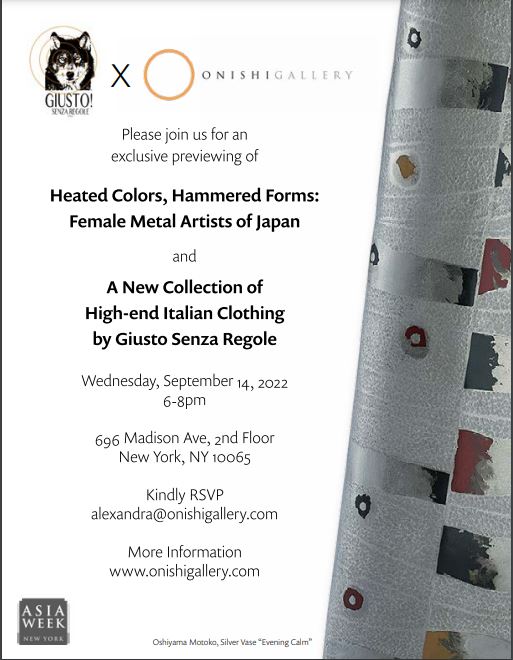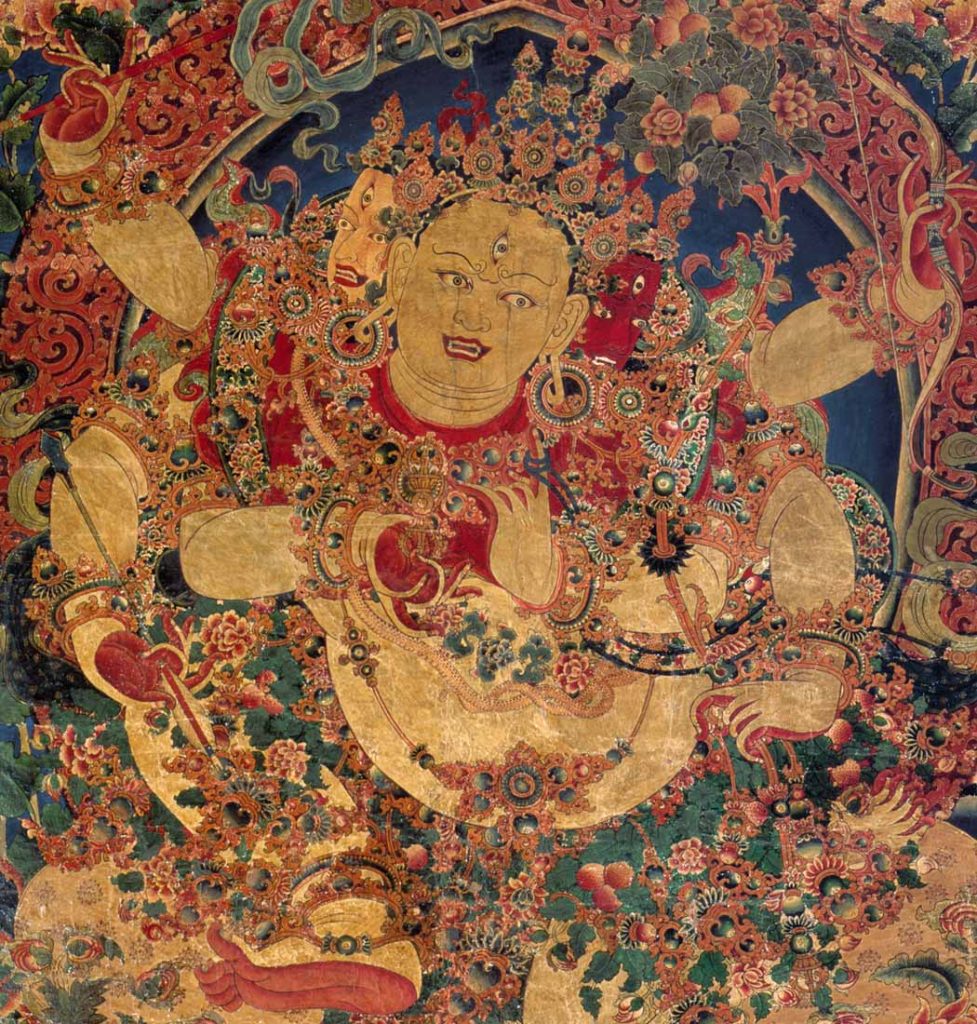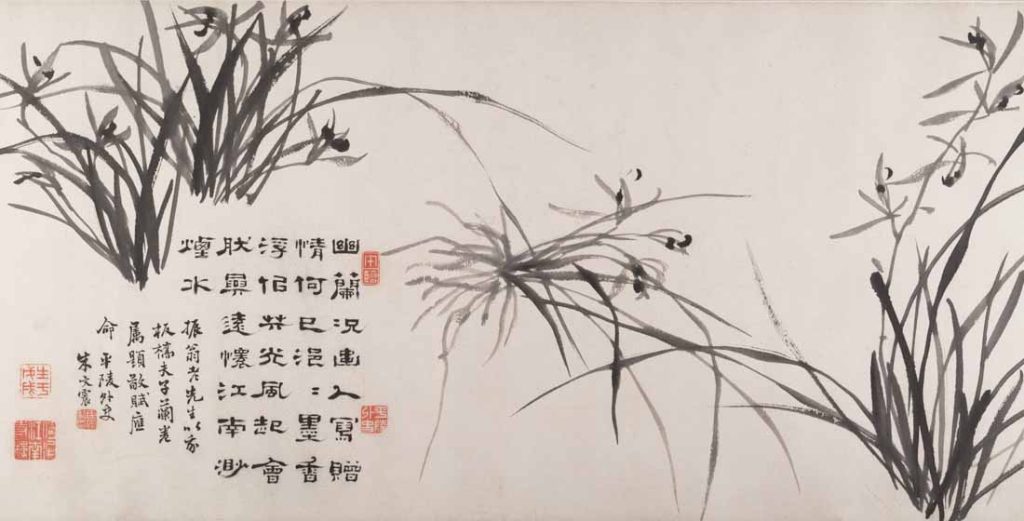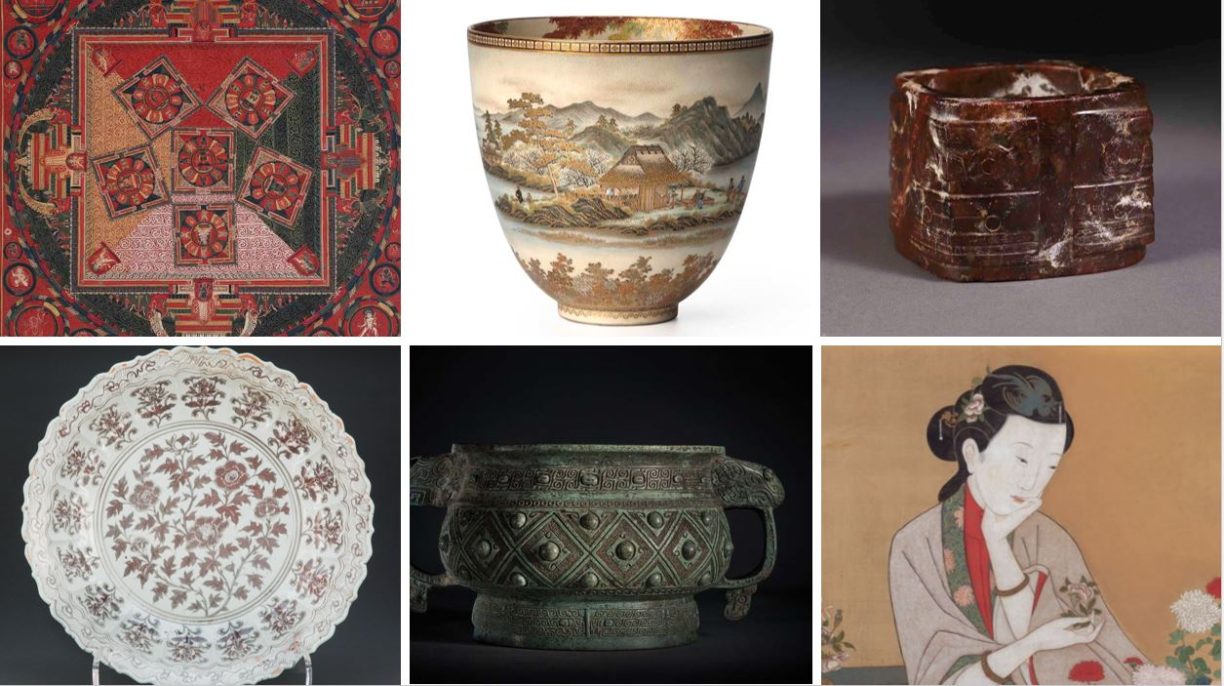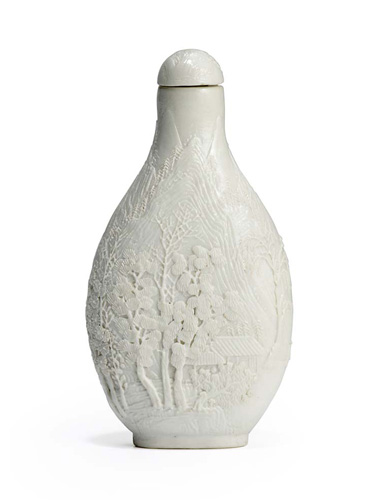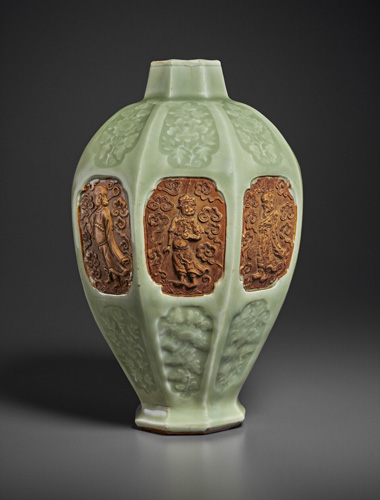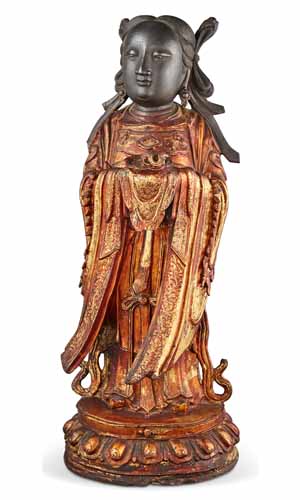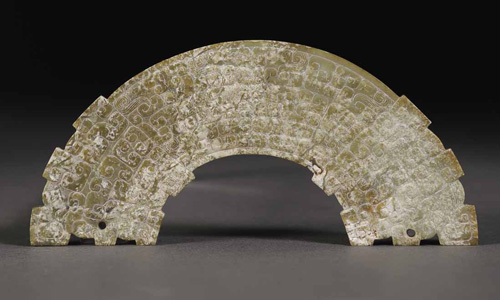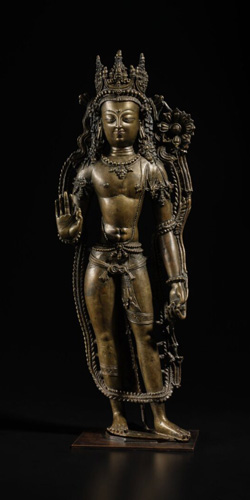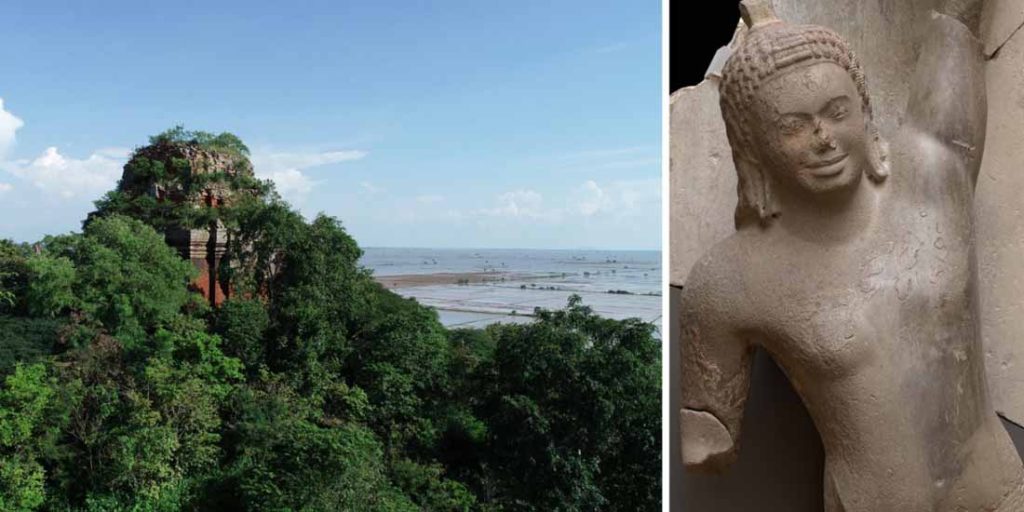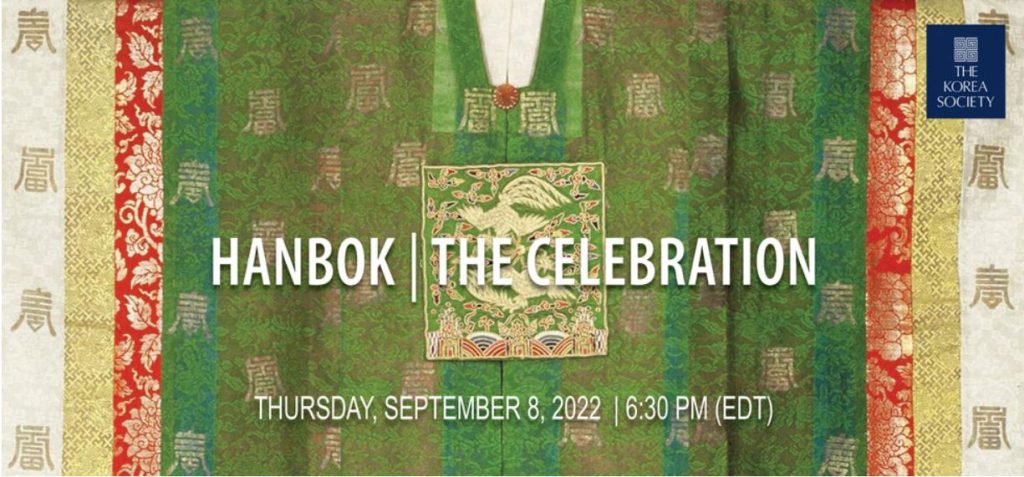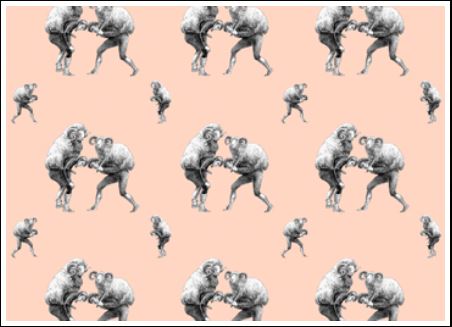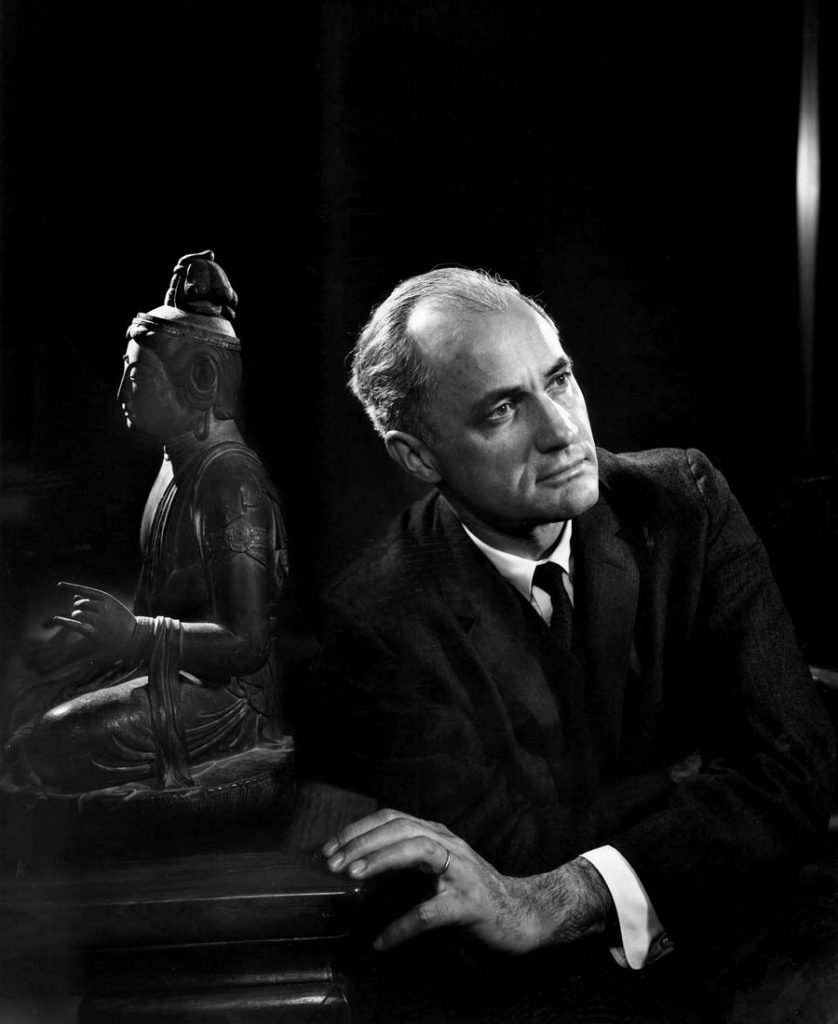Parnashvari, Goddess of Natural Healing (detail), Central Tibet, 19th century, pigments on cloth,
The Rubin Museum of Art, C2003.36.3 (HAR 65302)
The following Asian Art exhibitions are on view in New York during this month's Asia Week.
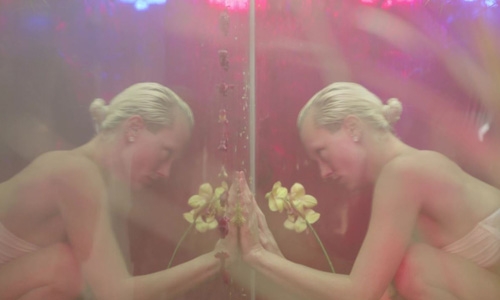
ASIA SOCIETY
Mirror Image: A Transformation of Chinese Identity
This exhibition presents 19 artworks by seven artists, born in mainland China in the 1980s. Belonging to what is referred to as the ba ling hou generation, they grew up in a post-Mao China shaped by the one-child policy and the influx of foreign investment. Comprising painting, sculpture, performance, installation, video, digital art, and photography, the exhibition reflects the dramatic economic, political, and cultural shifts the artists have experienced in China during their lifetimes.
Visionary Legacies: A Tribute to Harold J. Newman
This exhibition celebrates Hal Newman (1931-2021) who, with his wife Ruth, endowed Asia Society Museum’s Collection of Contemporary Asian Art with a seminal gift of some 30 artworks in 2007. Works by eight artists and one artist collective featured in the exhibition represent Hal’s eye and passion for art that pushes the boundaries in Asian and Asian American contemporary art.
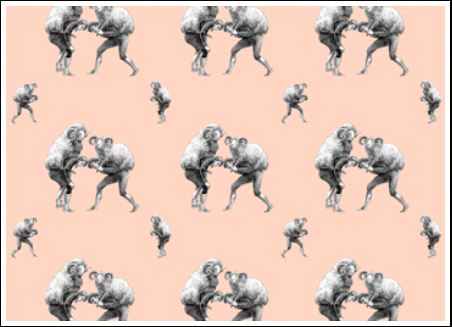
CHARLES B. WANG CENTER AT STONY BROOK UNIVERSITY
Saule Dyussenbina: Kazakh Funny Games and New Mythologies
Curated by Jinyoung A. Jin, Saule Dyussenbina: Kazakh Funny Games and New Mythologies traces complex Central Asian geopolitics, history, traditions, and USSR memories through the works of Saule Dyussenbina. The former USSR-born Kazakh artist encapsulates the cultural diversity and multifaceted political history of Kazakhstan, and she produces new narratives and myths through unexpected juxtapositions and fragmented images.

CHINA INSTITUTE
Mountains and Painting
Opens September 22
Combining photography of the renowned Chinese mountains with original Qing dynasty (1644-1911) Chinese landscape paintings from U.S. private collections, this showcase spotlights twenty-two works of art by thirteen artists, revealing the importance of mountain culture in Chinese history and art. The assembled works will highlight the formats, compositions, techniques, subjects, and aesthetics of Chinese painting. This unique display will provide basic knowledge of landscape painting, as well as inspire further interest in the genre and arouse and appreciation of the relationship between man and nature in Chinese culture.
Read more, click here
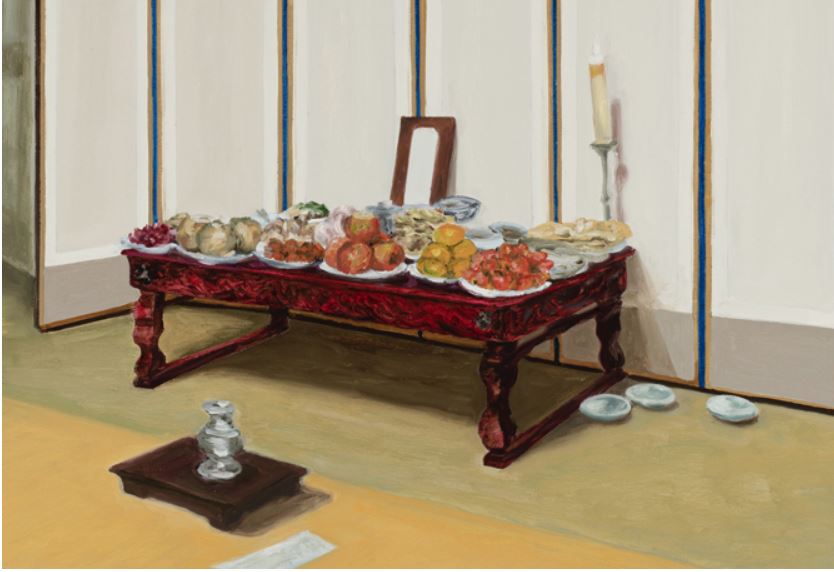
KOREA SOCIETY
Young Min Moon: The Share for Those Who Remain
In his paintings Young Min Moon depicts Jesa, a Confucian ritual for commemoration of the deceased, which was one of the earliest memories he holds while growing up in the military regime of South Korea in the 1970s and 80s. Despite the gender politics now associated with the ritual today due to its patriarchal nature, Moon insists on exploring the legacy. For him, the ritual holds multiple layers of meanings: an occasion of silence utterly severed from the violent era of his childhood, a means of remembering the deceased, and a tradition that may be discontinued in the age of globalization.
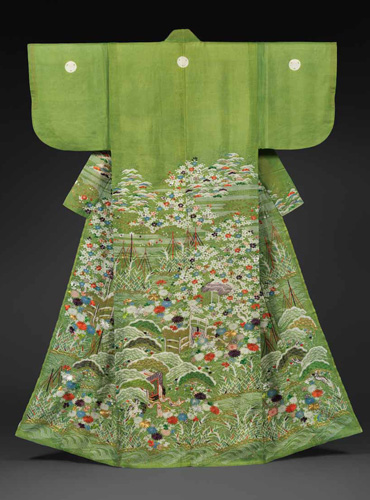
THE METROPOLITAN MUSEUM OF ART
Bodhisattvas of Wisdom, Compassion, and Power
Within the Buddhist traditions of the Himalayas, three bodhisattvas emerge as personifications of Buddhist ideals: Manjushri, Avalokiteshvara, and Vajrapani. This show presents sublime representations of these three bodhisattvas at the center of this great devotional tradition.
Celebrating the Year of the Tiger
In celebration of the Year of the Tiger, which began on February 1, 2022, The Metropolitan Museum presents an exhibition with a remarkable selection of works from the Museum’s permanent collection and a few fantastic loans, including a 11th century B.C. marble sculpture and an 18th century glazed porcelain figure of a highly animated tiger.
Noble Virtues: Nature as Symbol in Chinese Art
Flowers, plants, and animals abound in Chinese art. From simple objects for the home to fancy vessels for the imperial court, popular prints to meticulously crafted paintings, manifestations of the natural world are found nearly everywhere. Sometimes these images are purely decorative, but often they carry meanings drawn from history, poetry, and cultural memory. This new exhibition, drawn primarily from The Met collection, introduces some of these themes through over 100 works of painting, calligraphy, and decorative arts.
Kimono Style: The John C. Weber Collection
This exhibition traces the transformation of the kimono from the late Edo period (1615–1868) through the early 20th century, as the T-shaped garment was adapted to suit the lifestyle of modern Japanese women. It features a remarkable selection of works from the renowned John C. Weber Collection of Japanese art that explore the mutual artistic exchanges between the kimono and Western fashion, as well as highlights from The Costume Institute’s collection.
Jegi: Korean Ritual Objects
During the Joseon dynasty (1392–1910), Neo-Confucianism was the ruling ideology. People engaged in rituals on the birth and death anniversaries for ancestors upward of five generations, and on major holidays, such as the Lunar New Year and Chuseok (Harvest Moon Festival). Court ancestral rites became the bedrock of Joseon political life and were enacted on a grand scale that included musical and dance performances. A key feature throughout was a table bearing food and drink offerings presented on jegi, or ritual objects. This exhibition features the various types of ritual vessels and accessories that were used for this purpose and entombed, as well as the kinds of musical instruments played at state events.
Samurai Splendor: Sword Fittings from Edo
This installation in the Arms and Armor galleries explores the luxurious aspects of Edo-period sword fashion, a fascinating form of arms and armor rarely featured in exhibitions outside Japan. It presents a selection of exquisite sword mountings, fittings, and related objects, including maker’s sketchbooks—all drawn from The Met collection and many rarely or never exhibited before.
A Passion for Jade: The Bishop Collection
More than a hundred remarkable objects from the Heber Bishop collection, including carvings of jade, the most esteemed stone in China, and many other hardstones, are on view in this focused presentation. The refined works represent the sophisticated art of Chinese gemstone carvers during the Qing dynasty (1644–1911) as well as the highly accomplished skills of Mogul Indian (1526–1857) craftsmen, which provided an exotic inspiration to their Chinese counterparts. Also on view are a set of Chinese stone-working tools and illustrations of jade workshops, which introduces the traditional method of working jade.
Embracing Color: Enamel in Chinese Decorative Arts, 1300-1900
Enamel decoration is a significant element of Chinese decorative arts that has long been overlooked. This exhibition reveals the aesthetic, technical, and cultural achievement of Chinese enamel wares by demonstrating the transformative role of enamel during the Ming (1368–1644) and Qing (1644–1911) dynasties. The more than 100 objects on view are drawn mainly from The Met collection.
Michael Lin: Pentachrome
Michael Lin’s site-specific installation Pentachrome brings contemporary art to the Museum’s Great Hall Escalator for the first time. Inspired by The Met collection and the building’s architecture, Pentachrome invites visitors to reconsider the Museum’s Great Hall, its Balcony, and the surrounding art from a fresh perspective.
Arts of Nepal & Tibet
This year’s annual rotation of the Himalayan galleries is distinguished by a number of major new acquisitions and gifts that continue to build The Met’s holdings as one of the premier collections of Tibetan and Nepalese masterworks.
Perfect Imperfection in Ceramic Art
Drawing upon collection objects from both the Asian and Modern and Contemporary Art Departments, this exhibition explores the development of the concept of imperfection in ceramic art in Japan, as well as its profound influence on American and European makers during the 20th century.
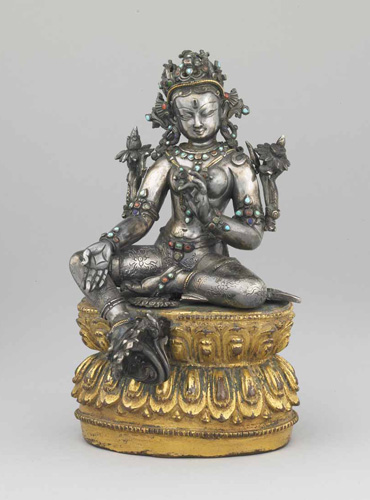
THE RUBIN MUSEUM OF ART
Gateway to Himalayan Art
Gateway to Himalayan Art, curated by Elena Pakhoutova, introduces viewers to the main forms, concepts, meanings, and traditions of Himalayan art represented in the Rubin Museum collection.
Shrine Room Projects:
ROHINI DEVASHER/PALDEN WEINREB
In dialogue with the Tibetan Buddhist Shrine Room at the center of the gallery, Shrine Room Projects is an exhibition series that features contemporary artists who reinterpret traditional and religious iconography. For Shrine Room Projects, Rohini Devasher (b. 1978, New Delhi) presents a two-channel video installation, 300 Km or the Apparent Movement of the Sun (2020), a powerful visual meditation on the observation of the sun moving across the sky. Palden Weinreb (b. 1982, New York) presents two mixed-media works created in wax and illuminated by LED lights, Offerings (2014) and Untitled (Stupa) (2013).
Masterworks: A Journey Through Himalayan Art
This regularly changing exhibition at the Rubin explores major strands in the development of Himalayan art, covering a period of over one thousand years and featuring objects drawn primarily from the Rubin Museum’s collection.
Healing Practices: Stories from Himalayan Americans
Healing Practices: Stories from Himalayan Americans presents the diverse ways that Tibetan Buddhist artworks and practices have served as roadmaps to well-being, with over 25 objects from the Rubin Museum’s collection set alongside personal stories and experiences from Himalayan Americans. Centered around the themes of prevention, healing, and longevity, the exhibition highlights how these living traditions are transformed and adopted for today’s world, inspiring visitors to reflect on their own healing journeys.
